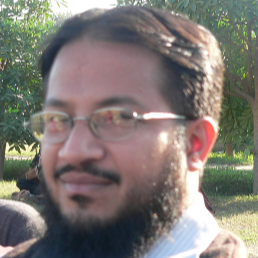
Muhammad Ilyas
Work place: COMSATS Institute of Information Technology, Islamabad, 44000, Pakistan, University of Sargodha, Sargodha, 40100, Pakistan
E-mail: m.ilyas@uos.edu.pk
Website:
Research Interests: Computational Science and Engineering, Computational Engineering, Software Creation and Management, Software Engineering, Computer systems and computational processes, Information Retrieval
Biography
Muhammad Ilyas received the Ph.D in Software Engineering from Johannes Kepler University Linz. He is currently working as Assistant Professor in Department of Computer Science, University of Sargodha. His research interests include Software Engineering, Human Computer Interaction and Artificial Intelligence.
Author Articles
Source Code Author Attribution Using Author’s Programming Style and Code Smells
By Muqaddas Gull Tehseen Zia Muhammad Ilyas
DOI: https://doi.org/10.5815/ijisa.2017.05.04, Pub. Date: 8 May 2017
Source code is an intellectual property and using it without author’s permission is a violation of property right. Source code authorship attribution is vital for dealing with software theft, copyright issues and piracies. Characterizing author’s signature for identifying their footprints is the core task of authorship attribution. Different aspects of source code have been considered for characterizing signatures including author’s coding style and programming structure, etc. The objective of this research is to explore another trait of authors’ coding behavior for personifying their footprints. The main question that we want to address is that “can code smells are useful for characterizing authors’ signatures? A machine learning based methodology is described not only to address the question but also for designing a system. Two different aspects of source code are considered for its representation into features: author’s style and code smells. The author’s style related feature representation is used as baseline. Results have shown that code smell can improves the authorship attribution.
[...] Read more.SourceViz: A Tool for Supporting Software Metrics Visualization
By Muhammad Ilyas Hafiz Anas Bilal Qandeel Tariq Saba Ameer Awan
DOI: https://doi.org/10.5815/ijieeb.2017.03.03, Pub. Date: 8 May 2017
Maintaining and understanding large software systems is a complex and time consuming process. Understanding the internal structure of such systems is not an easy task due to the invisible nature of software. Source Code Visualization, i.e. measuring the code metrics and then visualizing them, provides an efficient solution to this problem. There are many tools available which gives an insight to the internal structure of the software. But all of them don’t provide visualizations of hierarchical relationships and code complexity of the source code. In this paper, we present a tool named “SourceViz”. This application computes different software metrics, code complexity, class-relations and then visualizes the calculated metrics in different metaphors. This visual analysis assists the project managers and software developers in understanding the static structure of the software by presenting project-level as well as class-level view.
[...] Read more.Classification of Reusable Components Based on Clustering
By Muhammad Husnain Zafar Rabia Aslam Muhammad Ilyas
DOI: https://doi.org/10.5815/ijisa.2015.10.07, Pub. Date: 8 Sep. 2015
Software reuse is the process of implementing or updating software systems using existing software components. A good software reuse process facilitates the increase of productivity, quality and reliability. It decreases the cost and implementation time as compared to develop new system. Despite its many benefits we cannot achieve its full benefits. The reason behind this is that software reuse is often done in an informal and haphazard way. If done systematically, then we can achieve its full benefits. This research proposes a method through which we will classify the reusable components in proper way to get the full benefits of reusability. We classify the reusable components according to their clusters. Clusters are made on the basis of parameters provided with components. We develop an algorithm for assigning clusters to the reusable components.
[...] Read more.Other Articles
Subscribe to receive issue release notifications and newsletters from MECS Press journals